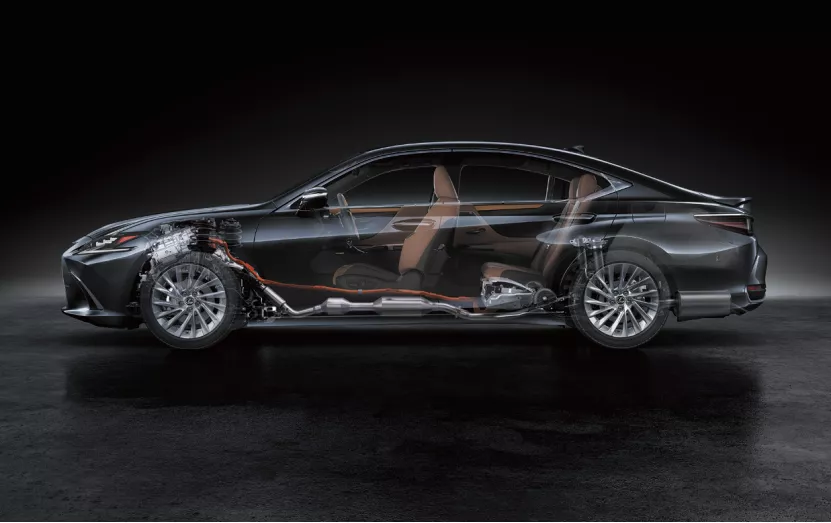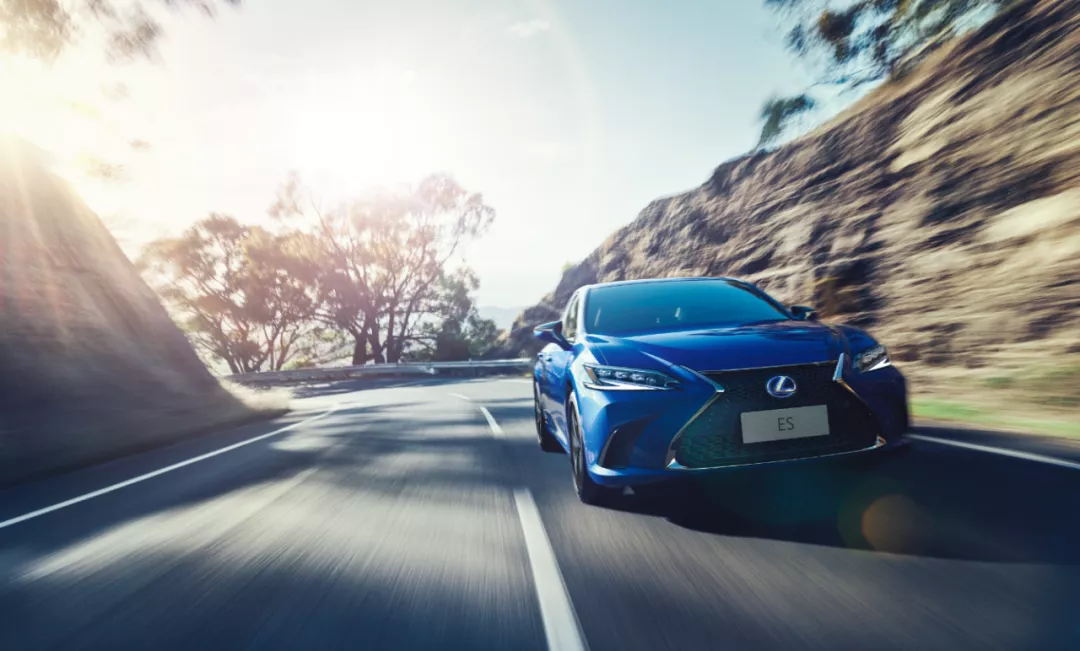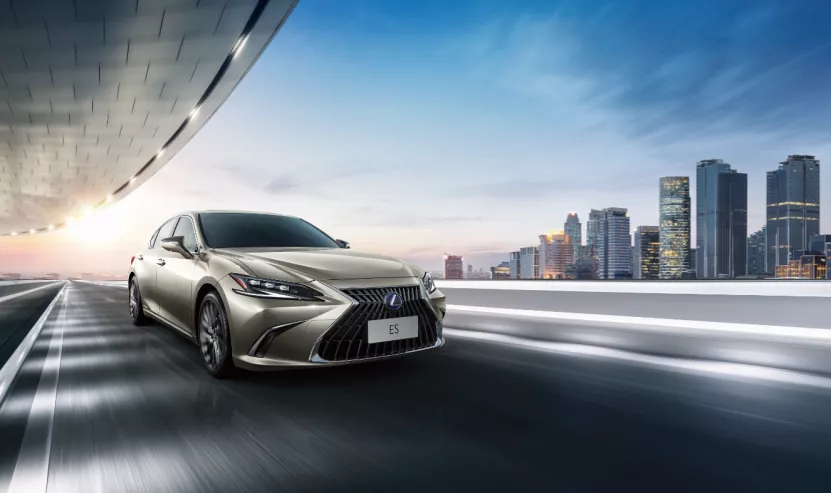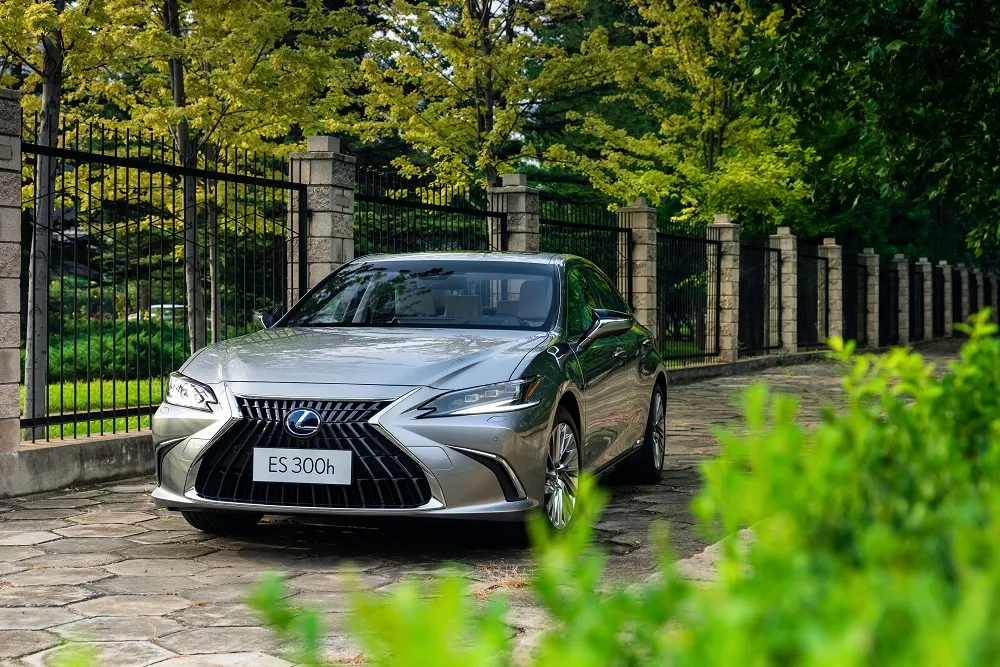Should I switch my ES for the new model?
“My former colleague has been asking me this question quite often lately,” he said. He’s been driving his Lexus ES 300h for almost five years, and with the news of the new Lexus ES hitting the market, he’s been itching for a change.
I, for one, am curious – after five years, he’s not bored yet? And with so many options in that price range, why would he want another ES?
Whenever I half-jokingly ask him, he always responds with, “You’ll know once you buy one.”
Indeed, the Lexus ES is a “godsend car.”

Aside from jokes such as “you can still sell it for 10,000 CNY more after two years” circulating in the market, none of the ES owners I know seem to have any negative feedback on this vehicle. They may not rave about it like they’re hyped up on adrenaline, but they’ll lightly say, “It’s fine, you can buy it.”
The data tells the story.
As an imported car, the Lexus ES has managed to sell over 10,000 cars a month in the Chinese market, making it the best-selling luxury imported car model in China in 2020 with sales of 114,641 cars. Customers are voting with their feet.
What makes this product so successful in garnering praise from its customers?
The Lexus brand behind it has certainly done a few things right. But what exactly did they do right?
Unavoidable “Service”
I once chatted with a few Lexus ES owners, who all shared a view: that they felt “respected” during the ownership experience.
In their opinion, this feeling is crucial. Because by the time a car costs 300,000 to 400,000 CNY, the car itself is already decent. At this point, the experience of service will play a decisive role.
Lexus’s services include both visible and invisible aspects.
The “visible” aspects are straightforward. For example, the procedures for free maintenance are simple and efficient, the after-sales service hall is neat and orderly with a reasonable functional division, exquisite snacks are provided while waiting, and the staff’s behavior and facial expressions are comfortable to interact with. Some 4S stores even provide free pick-up and drop-off services, where you can park your car there for maintenance, and then have it cleaned and ready to go when you come back after your business trip – very convenient and considerate.# “Invisible” Places is where internal energy is cultivated.
One of the most important differences in values between automotive companies is whether the after-sales department’s goal is defined by performance or reputation. Currently, due to decreased new car sales revenue, many automotive companies try all possible means to earn back profits from the after-sales end. This goal leads to some abnormal actions that result in poor customer experience. However, Lexus is different. In their initial strategic planning, they clearly defined that after-sales should be directed towards reputation.
You may take a look at some after-sales policies currently offered by Lexus: gasoline vehicle models offer a four-year or 100,000-kilometer whole-vehicle warranty and free maintenance; intelligent hybrid and pure electric vehicle models offer a six-year or 150,000-kilometer whole-vehicle warranty and free maintenance; pure electric vehicle models offer an eight-year or 200,000-kilometer warranty on the three powertrain systems. Obviously, their policies are customer-oriented.
This reminds me of a conversation I had with a Lexus aftersales friend three years ago. At that time, I asked him why Lexus’s service was better than other brands, and what was the secret to their good customer experience? His answer was very clear and concise: “heart and soul”. Two words, simple yet challenging. It cannot be achieved by knowing what to do and calling out slogans. It needs to flow from top to bottom in the company’s genes and requires a slow accumulation of time.
It is clear that Lexus’s service has now become an obvious moat.
The Irreplaceable “Product”
But, is service enough? Of course not.
If service is a string of “0”, then the product is the “1” in front of this string. It is the foundation of an enterprise’s ability to provide service.
So, what is the product strength of the new Lexus ES?
I have driven the Lexus ES many times, and it is not the kind of car that impresses you at first sight. However, the longer you drive it, the more you rely on it. If I had to describe this car in one sentence, it would be “like a pot of good tea, the more you taste, the more fragrant it is.”
This time, the new ES was released in a total of ten models, with a suggested retail price ranging from 294,900 yuan to 488,900 yuan. If I had to compare two typical aspects, they would be “design and power”.
Compared to the exaggerations of many current designs, the overall feeling of Lexus’s design is still very restrained.The new ES inherits the flagship luxury sedan LS’s design, which may not seem very different to those who are not familiar with the ES products, but if you pay attention, you will find that the delicacy is hidden in the details. For example, the vertical spindle grille has an “L” design and a more prominent chrome frame, making the front of the car sharper.
This feeling is even more prominent in the new ES’s interior design. The interior of the new Lexus ES adopts the concept of “mountain and water mood.” In the designer’s concept, traditional craftsmanship, modern technology, and natural materials are organically combined to add a dynamic and elegant overall atmosphere to the cabin, just like the exterior design: exquisite and hidden in the details.
For example, the new ES door handles and center console are decorated with Viscotecs™ cushion printing technology. This technology applies advanced surface coating processing on the originally flat interior surface to bring out the wavy texture, making the surface more three-dimensional and layered, and more comfortable to the passenger’s body.
Moreover, the new ES’s steering wheel, gear lever, door panel, and seat, especially the center console panel frequently seen by passengers, are decorated with pure hand-stitched threads. Each stitch is directly embedded into the fabric to present a three-dimensional effect.
In addition, some functions need to be deeply experienced to be felt. For example, the new ES model uses a brand new touch-controlled center screen, which moves closer to the driver by more than 100 millimeters and tilts at an angle of nearly 5 degrees, reducing reflection caused by sunlight and ensuring more convenient operation. Users can feel that all human-machine interaction functions in the car are reasonably arranged around the driver’s seat, and the driver can control all driving functions without changing the seating position or looking away from the road. For example, the ambient lighting extends from the dashboard to the door trim panel, which is very modern and warm when driving at night.
Another thing that requires careful appreciation is the power of the Lexus ES. Many friends who drive the Lexus ES for the first time may have some complaints, saying that the car doesn’t seem to be very fast. That’s right, the ES is not one of the “absolutely fast” cars, but it is “very durable.”
In Lexus’s own words, the key words for the new ES in the field of driving performance are “clear and deep.” “Clear” means agile response, perfect match with handling and vehicle feedback. “Deep” means that still waters run deep, providing a feeling of confidence and calmness.
In conclusion, it is a very wonderful sense of compatibility.
Also, one detail that impressed me a lot was the fuel consumption control of the Lexus ES. As mentioned earlier, my colleague’s old ES 300h had a comprehensive fuel consumption of just over 5L in the city and on the highway. In contrast, the new ES intelligent hybrid model, equipped with a 2.5L inline 4-cylinder engine with a thermal efficiency of 41% and matched with an ECVT electronic continuously variable transmission, can achieve a fuel consumption of around 4.8L per 100 kilometers under the WLTC standard.
Of course, in addition to design and power, the new ES model continues to excel in its core strength: ride silence.
The active noise reduction system (ANC) mitigates noise entering the cabin by emitting sound waves that cancel out the noise of the engine and external environment through the vehicle’s speakers. In addition, a range of passive noise reduction technologies such as double-glazed sound-insulated glass, rain wiper deceleration control, noise-reducing wheels, Hybrid Acoustics™ hybrid power noise reduction system, enclosed chassis and large area sound-absorbing insulation materials further enhance the ride comfort of the vehicle. Moreover, the redesigned engine hood of the new ES also effectively insulates engine noise.
All of these features epitomize the hard strength of the new Lexus ES.

Moreover, worth noting is the debut of the ES 300h F SPORT model in the new Lexus ES series. This product was launched mainly in response to the demands of Chinese consumers. Lexus listened to user feedback and introduced the ES 300h F SPORT model in this new ES series. The ES 300h F SPORT model has high recognition and boasts a sporty mesh spindle grille, exclusive 19-inch sport smoking black wheels, F SPORT exclusive badges on the body side fenders and the rear, and other F SPORT exclusive trim elements. In addition to the exclusive appearance package, the ES 300h F SPORT also provides a movable instrument panel, exclusive aluminum trim panel, and LC-derived F SPORT sport seats.
The “Resonance” between People and Cars
We talked about service and product.
However, in my opinion, the real core competitiveness of Lexus lies not only in service or product, but also in the subtle and deep “resonance” established with users across multiple dimensions such as brand, product, and service.

When you drive other vehicles, you may feel that you are just driving a car, while in a Lexus, you can feel more than just the car — you can also sense the harmony between the car and yourself.But with ES, you might feel: the car is a part of you.
This is especially important for a product like Lexus ES. When consumers choose a product, rational comparison is certainly important, but the last emotional decision is often influenced by emotional factors. The leading factor for emotional choice is often the brand and user’s empathy.
Of course, it takes time to build this “resonance”. Lexus’ long-term “people-oriented” and “craftsmanship” spirit will become more and more precious and fan-attracting in this fast-paced era.
Just like the new Lexus ES, it seems to bring a sense of power to every car owner: it is an inner, quiet, calm but extraordinary power.
This article is a translation by ChatGPT of a Chinese report from 42HOW. If you have any questions about it, please email bd@42how.com.
